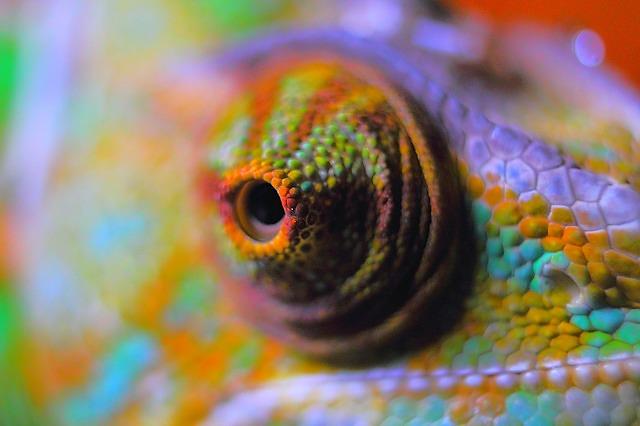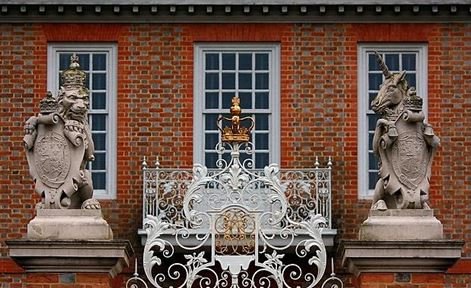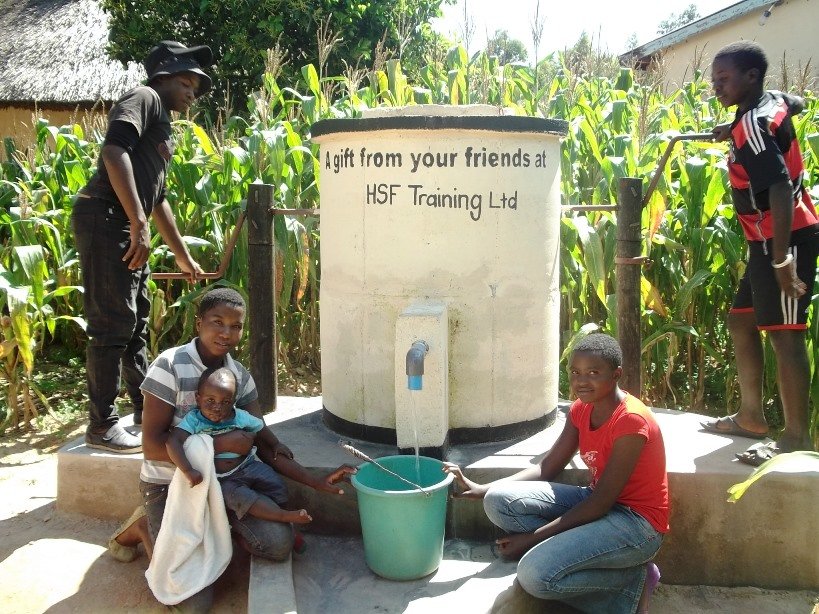
by Fern Shaw | Sep 11, 2015 | Uncategorized
I’ve always loved adages and how they evolve, but I love them especially when they relate to predictions about the weather and the natural world.
For example, one of my favourites, which I’ve never quite understood is:
‘Red sky at night, sailor’s delight. Red sky in morning, sailor’s warning’.
The wonder of this is, is there any truth in this old adage?
Red sky at night, sailors delight
When we see a red sky at night, this means that the setting sun is sending its light through a high concentration of dust particles. This usually indicates high pressure and stable air coming in from the west. Basically, good weather will follow.
Red sky in morning, sailor’s warning
A red sunrise can mean that a high pressure system (good weather) has already passed, thus indicating that a storm system (low pressure) may be moving to the east. A morning sky that is a deep, fiery red can indicate that there is high water content in the atmosphere. So, rain could be on its way.
Mackerel sky and mare’s tails make tall ships carry low sails
This weather proverb originates from a nautical background when different cloud types were used to determine whether sails needed to be lowered. Also referred to as just a ‘mackerel sky’, it is associated with altocumulus clouds while ‘mare’s tails’ refer to cirrus clouds. Both could develop before the instance of a storm which would lead to the lowering of the ships sails. Altocumulus clouds appear when there is a certain level of moisture in the air suggesting rainfall is approaching. The term ‘mackerel sky’ comes from the clouds resemblance to the scales of the mackerel. This terminology is rather lovely if you think about it!
When the wind is out of the East, ‘tis never good for man nor beast
This weather proverb carries some truth if you consider the various air masses that affect Britain and its weather. The air mass coming in from a North-Easterly direction is the Polar Continental; record low temperatures have been seen due to this air mass affecting Britain. This air mass originates in places such as Eastern Europe and Russia to affect Britain with bitterly cold winds in winter and dry, warm winds in summer although it is usually only apparent in Britain during winter (between November and April).
So, now you know. Here’s wishing you red sky nights for the foreseeable future! Or you could do as comedian Tom Parry says (fresh from the Edinburgh Festival): Red sky at night: shepherd’s delight. Blue sky at night: day.

by Fern Shaw | Aug 24, 2015 | Uncategorized
Last week, we sent a mailer to all you wonderful people with 4 different articles, one of which was a quick quiz. Gauging the response to these articles, it seems the quiz came up trumps. I found this very interesting. Humanoids like to engage, one and two, like to be asked their opinion. Hm.
With this in mind I’ve devoted this week to preparing blogs that mystify, question and challenge (okay, perhaps that’s a little strong, but then you know me – all about the drama). In this blog we look at facts that have been around for yoinks, except, as it turns out, they aren’t actually facts.
Frankenstein was the name of the monster in Mary Shelley’s book.
Frankenstein is actually the name of the monster’s creator.
Coffee is made from beans.
A coffee bean is a seed of the coffee plant, and is the source for coffee. It is the pit inside the red or purple fruit often referred to as a cherry. Even though they are seeds, they are referred to as ‘beans’ because of their resemblance to true beans.
Chameleons change colour to match their surroundings.
They change as a response to mood, temperature, communication and light, not the object they are touching.
Peanuts are a type of nut.
This is incorrect. They belong to the plant family, Leguminosae.
Your blood is blue before it’s oxygenated.
Not true – human blood is always red.
When in London, you are merely 6ft away from a rat.
This is just a rough estimate as rodents are not evenly spread.
Tomatoes are a vegetable.
While the Supreme Court of the United States did rule that tomatoes are vegetables in the legal sense for the purpose of taxation (Nix vs Hedden), they did not claim they are vegetables in any botanical sense. They are still fruits.
Now you know. Amaze your friends and colleagues around the water cooler station. Your street cred will increase exponentially. (Unless, of course, people will think you’re just showing off. Can’t help you with that, sorry!).

by Fern Shaw | Jul 31, 2015 | Uncategorized
While doing research for a ‘Hydration in Summer tips’ (aside from drinking good old water) blog, and as my mind skittered crazily from one topic to another in a burst of what I call, ‘The Frenetic Frenzy of Fern’, I chanced upon a delightful article written about the origins of why a specially sized flake stuck in soft serve in a cone became known as a 99 or 99’er.
Well, talk about a chequered past – more twists and theories than Area 52 has the 99’er!
A few of the theories are:
- The length of the chocolate flake – that it was specially made for ice-creams at a shorter length, measuring exactly 99mm. But the 99 has been around since long before the days of metric measurement.
- Apparently an ice cream with a Flake was No. 99 on an ice cream menu, so this became shortened to a ‘99’.
- That the phrase was coined in Portobello, Scotland when Stephen Arcari, who opened a shop in 1922 at 99 Portobello High Street, would break a large ‘Flake’ in half and stick it in an ice cream. The name came from the shop’s address.
- The 99 refers to something of good quality or top notch as with the supposed 99 soldiers that guarded the King of Italy; however this actually refers to the Vatican’s Swiss Guard, not the King of Italy’s soldiers, and in reality, there were 105 members, not 99.
- Probably the most common false etymology of recent years has been that the 99 gets its name from the price: 99p. Although the ice-creams were, not too long ago, just less than a pound, the term dates back from at least 1935 and the days of pounds, shillings and pence, so that’s not it either.
Despite a plethora of theories and ‘facts’, it seems that origin of the name is lost in swirls of ice cream and a chunky, crumbly delicious Flake and who can argue against that? Roll on summer is all I have to say.
I’m leaving my usual station at the water cooler, you’ll find me outside queuing at the Mr. Whippy van. If you put your order in, I’ll be happy to buy one for you too.

by Fern Shaw | Jul 31, 2015 | Uncategorized
I cain’t get noooooo …. respect. Weather’s improving and I’ve been cartwheeling down the corridors with excitement all the way up to the water cooler station, believing that somewhere in the period that I’ve been writing blogs, some of my advice about heat, hydration and keeping your drinking water levels up, up, up, has made a positive impression on some of y’all.
Not so, it seems, as here I dither, wearing a path in the industrial nylon carpet around the cooler, waiting in vain for colleagues to share anecdotes, sing ditties and swap a bit of skinny with. Seems like I’m in for a long wait.
Plan Q, therefore, has been to keep myself amused (trust me, with my brain, this isn’t hard to do). This I achieved by thinking about all the after movie credits scenes I’ve missed over the years. Turns out – more than 10 – that being from movies I’ve watched or would watch. A few fabulous ones are:
*Zombieland
Not content with providing one of the finest film cameos ever seen, with the mighty Bill Murray popping up in zombie make-up, then actually making it worthwhile, before providing what has to be on the best death scenes in history, Zombieland rewards the patient viewer with one more gem, and this one is a real treat for Murray fans. Cutting back to his protracted dying, Tallahassee is struggling to come up with suitable final words to say. Bill Murray draws upon his long career to help him out, “In the words of the immortal philosopher Jean Paul Sartre, ‘Au revoir, gopher’”. What a guy. If you’ve never watched Caddyshack, I can’t help explain how brilliant this post credit scene is.
Harry Potter & the Chamber of Secrets
A nicely done nod to the book, and a reveal of what happened to Gilderoy Lockhart, one of the best characters in the series – a pan through Diagon Alley to the new book from the amnesia stricken ex-teacher, “Who Am I?”, with Kenneth Branagh doing a delightfully doolally imitation. In a film series that sometimes seemed to strive for the most serious and po-faced retelling of the books, it’s good to see the filmmakers having a little bit of fun.
Kill Bill: Vol. 2
Go past the extended credits of all the actors and their characters, then go past the black and white driving scene of Uma Thurman and the crossed out names of her victims … then you’re treated to a special post-credits sting – an outtake of Kill Bill’s most talked about scene, the showdown at the House of the Blue Leaves. Except this time the act of ripping an eyeball out merely leads to a fun and wholesome chuckle.
Finding Nemo
Despite the proliferation of extras during the credits of Pixar films, it is actually only Finding Nemo which has a post-credit scene. Luckily, it’s a damn good one, as a cute little fish is drawn in by the light of a terrifying angler fish, only to turn the tables in spectacular fashion. It’s the type of switcheroo Pixar is known for, and the animation is incredible, showing the loving detail lavished on all aspects of the production.
and the best post credit scene, in my opinion, and one that I missed for, oh, probably the first three times that I watched the movie *hang head in shame, blushing*:
Ferris Bueller’s Day Off
There are films that make a big deal about breaking the fourth wall, and then there is Ferris Bueller’s Day Off, which pretty much owns breaking the fourth wall. From showing us how to fake it, to constant other asides, we are never far from Ferris’s thoughts, so it is surely fitting that he gets the last word, directly to us. The credits have rolled (in themselves a very funny treat wrapping up what happened to Rooney) and the film is over. Out pops Ferris to admonish us and tell us it’s over. Go home. Fully in keeping with the playful and wish-fulfilment tone of the movie, Ferris makes you wonder quite why you’re still sitting there …
To paraphrase, ‘Gooo! Go on, go! What’re you still doing sitting here reading this for?’ If you’re sensible, you’ll pack up and head off into the sunshine. (Remember to take your water with you though). Apologies couldn’t resist that final Mom bit!
*excerpts from an article at Den of Geek

by Fern Shaw | Jul 31, 2015 | Uncategorized
I saw a post this morning on social media. It read “Google Scotland’s National Animal”, which I, of course, immediately typed in. Tadaa – it presented me with the Unicorn being Scotland’s National Animal. If that doesn’t cement my love of all things Scottish, nothing will.
I’ve often wondered where the idea of a unicorn comes from. If you think about it, looking back over the centuries, and what it must have been like for travellers to see their first walrus, bear, or even elephant, it’s not hard to imagine how certain real life creatures were seen to be mythical.
For example, take the Manatee, which was originally believed to be a Mermaid. There’s even a record from Christopher Columbus who saw them and thought (as others had before him), that they were mermaids:
‘On the previous day [8 Jan 1493], when the Admiral went to the Rio del Oro [Haiti], he said he quite distinctly saw three mermaids, which rose well out of the sea; but they are not so beautiful as they are said to be, for their faces had some masculine traits.’
Then, of course, there are Dragons. Most likely these originated from people having glimpsed (and then listened to rumours of) the Komodo Dragon.
For decades there were rumours of an enormous prehistoric lizard roaming a remote Indonesian island. This was until 1910 when Lt. Steyn van Hensbroek, a Dutch colonial official, decided to check things out for himself. He put together an expedition and headed to Komodo Island, where he caught and killed a 6-foot specimen. Van Hensbroek then sent the ‘dragon carcass’ back to the Zoological Museum and Botanical Garden at Bogor, Java, which dubbed the species Varanus komodensis.
But when we get to the Unicorn, sadly, sightings of the mythical beast remained just that, a myth. There were that believed that the unicorn may have originated from sightings possibly of the Oryx, the Single-horned Goat or the Narwhal.
These voyages of discovery are all quite impressive, I’m not so sure about the whole slaughtering of creatures and dragging carcasses back bit though. Then again, who I am to speak, when a big achievement for me is seeing whether I can make the water in the water cooler ‘gloomph’. Och aye!

by Fern Shaw | Jul 23, 2015 | Uncategorized
There’s definitely more involved than just the usual supplier / customer relationship when it comes to AquAid and its customers.
Not only do AquAid provide a high standard of service to their customers through the supply of a range of top-quality water coolers, boilers and water fountains, but an integral part of AquAid’s company ethos is supporting the provision of safe, clean drinking water to millions of people less fortunate.
This is achieved by ensuring that a portion from AquAid’s water cooler sales goes towards sustainable charities such as The Africa Trust, which builds Elephant Pumps throughout Africa.
With this in mind, AquAid invite their customers’ participation through the building of an Elephant Pump on the customer’s behalf. The installation of the pumps means that the children no longer have to walk for miles for water and the design of the pump is such that it ensures that there is no risk of contamination in the water they draw from it.
One of the most recent examples of this partnership was when we invited HSF Training, based in the North East of England, to participate in building an Elephant Pump in Africa on their behalf.
For over 15 years HSF Training have been providing a comprehensive range of compliance training, including health & safety, food safety, first aid and professional development, as well as consultancy services to a variety of clients.
They have an extensive client list, including large and small businesses across a variety of industries in both the public and private sectors. They assist clients in the North East of England, throughout the UK and in locations as diverse as Egypt, Azerbaijan, Kazakhstan, Nigeria and Georgia.
They were very pleased to participate and once their pump was built, in a region of Liberia, this year, HSF Training took to social media to share the good news.
We’d just like to thank all at HSF Training for participating in the well building campaign and spreading the good news far and wide.
If you currently have an AquAid water cooler and would like to find out how you can go about sponsoring your very own water well, at no extra cost, please contact us.
Via our website: https://www.aquaidwatercoolers.co.uk/contact
Via e-mail: shelly@aquaidwatercoolers.co.uk
Via telephone: 0800 772 3003
If you would like to enquire about purchasing a water cooler, drop us a line or give us a shout at any of the above. We’d love to be able to assist. And you can, of course, be very well (ha) on your way to sponsoring your very own water well.






